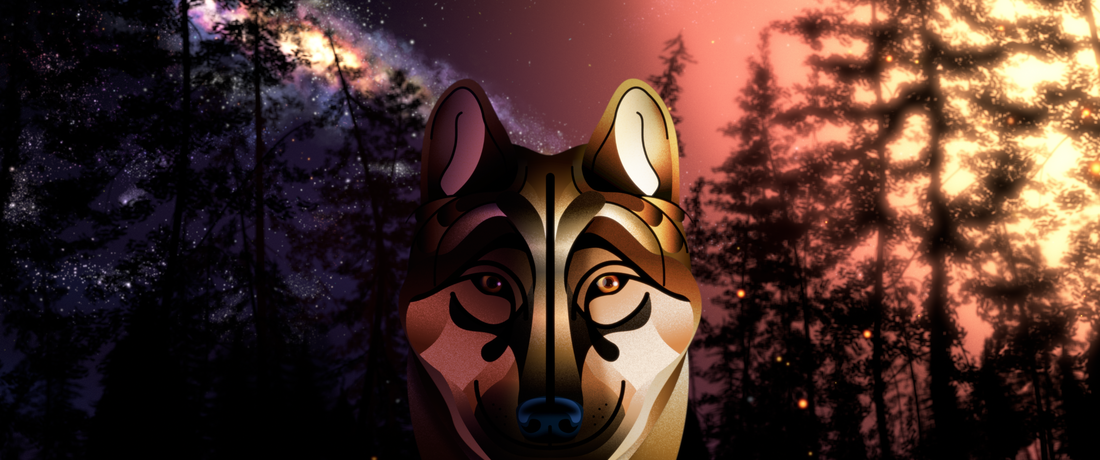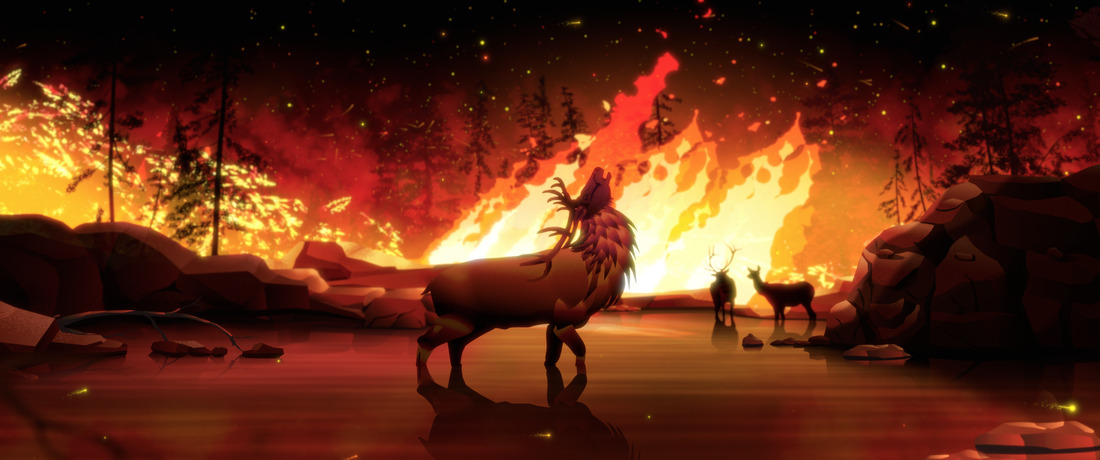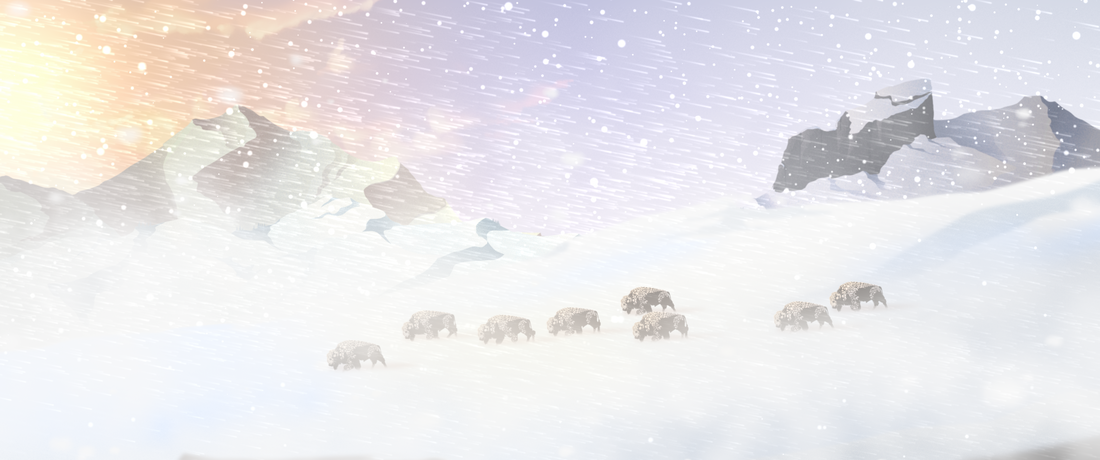Filmmaker Q&A with Jerry van de Beek and Betsy de Fries, Directors of YELLOWSTONE 88 – Song of Fire1/19/2023 Q: What inspired this story? Little Fluffy Clouds studio is located in Northern California where we are now beset with ever increasing climate change related fires and worsening air quality from smoke every year. Fire season begins earlier and finishes later with every year that passes. Nonetheless California also shows us the spectacular beauty of nature. The giant old growth redwoods, abundant bird and wildlife and ever increasing populations of bears and wolves. We always wanted to include wolves in our animations and had an early idea to do a short animation about the redwoods. While researching these subjects we came upon the story of the devastating fires that engulfed Yellowstone Park for so many months of 1988. A kernel of an idea began to take shape, to tell the story of that fire and its aftermath purely from the perspective of the flora and fauna in the park. Yellowstone 88 – Song of Fire is the culmination of that early seed. The narrative poem, Song of Fire, by Betsy has its’ roots in a TED Talk given some while ago by the writer, journalist and eco-activist, George Monbiot, on the subject of rewilding. Rewilding is a newish word coined for a forward thinking concept, it means the mass restoration of ecosystems. We were inspired by the notion of Trophic Cascade which he explains here: “This is an ecological process, which starts at the top of the food chain and tumbles all the way down to the bottom, and the classic example is what happened at Yellowstone National Park when wolves were reintroduced in 1995.” ~ How Wolves Changed Rivers - George Monbiot Q: How did you approach storytelling in this film? Telling a true story in the form of a narrative poem is hard to do. Poetry is an intangible expression of emotion coupled with an idea but this poem had the added layer of needing to be grounded accurately in facts. How to combine that with the spiritual story we wanted to weave? And how to tell the story of fire – what to include, what to leave out - yet still give full reign to the creative flow in both rhythm and rhyme? And of course how to evoke tantalizing imagery to set the stage for animation? Designing animation Yellowstone 88 was a challenge but one we really enjoyed. Once you know what story you want to tell you have to come up with a visual narrative that supports that story. You have to set parameters like color palettes and style. As with any story you have characters coupled with an event. In Yellowstone 88 our characters are the animals and the environment. The two major events of this story are the fires and the snowstorm. The nature of this story is one of high contrast. Against the brightness of the fire and the whiteness of the snow the story of the animals plays out in almost silhouette. This gave us the idea to create a 2D animation and stack the characters and events in layers. Starting with the first character - the environment – and moving on to add the events of the fire and snow. Adding on top of that the second character - the animals. To fully showcase the vastness of the landscape we introduced slow camera moves and worked with many 2D planes to create a parallax effect and immerse the viewer inside the story. At this stage that we made the choice to create the animation in Cinemascope and fully imbue it with an epic feel much in the way you experience Yellowstone in real life. The final challenge was to bring all the pieces together. The Poem has its own rhythm and flow but so does the animation and the music. Each is very powerful in its own right so combining these elements without compromising one for the other was a very delicate dance indeed. Q: Describe some of the challenges faced while making this film/program. We started Little Fluffy Clouds with the goal of earning enough money from paying projects to pay for our own creative short animations. In essence some 25 years later that’s still what we do. 2020 was a different kind of year. The entire world went into lockdown as the Covid-19 pandemic spread. With no prospect of work for a while we turned to what we do best - our own films. Once again we were our own clients with all the benefits and pitfalls that come with that. Only four people worked on this production with each their distinct talent and contribution: Jerry van de Beek, director, designer, animator, sound designer; Betsy de Fries, director and writer, Peter Coyote, spoken word actor and Mark Murphy, composer and sound designer. We operated from remote locations in in California and in Dublin. Like everyone else we had to rely on on-line links, zoom calls, emails and constant open communication to keep the production flowing and get it to the finishing line. It was challenging. There were stops and starts but we kept going and all of that makes us extra proud of our achievement. Q: What impact do you hope this film will have? As we were making Y88 it quickly became obvious to us that Climate Change/Chaos is overtaking our planet faster than our governments can adapt and react to but to strip away all hope only serves to immobilize. Perhaps the greatest take away from the 1988 park fires is how quickly an ecosystem can renew itself if nature is allowed to take it’s time and lead the way. We see this film as a way to get the climate change/chaos message across in a forceful yet beautiful way - a seduction as opposed to a hammer. The film is for everyone but reaching a younger audience is paramount. Their future is at stake here and they must come up to speed and advocate for themselves. Yellowstone 88 is now being shown in schools in France, Scotland and California as a means to jumpstart conversation and engagement around the issue. Q: Any facts about the film, the subject matter or the production crew that might surprise the audience? Relatively few animals died in the actual fires. Instinctively fauna understand and can gauge fire and usually can survive one. Some flee and some go underground. Most note the wind and smoke patterns and move away from the fire as quickly and as far as they can. Multiple fires converging pose a greater threat but the real danger to flora and fauna comes after a fire when the land is scorched bare and there is no food to be found. That same winter snow that doused the uncontained fires of Yellowstone was so severe that animals simply starved or died attempting to find food. It was a bitter loss of great proportion. At the time of the fire there were no wolves living in the park but their existence in Yellowstone predates the creation of the park and their presence and soul has always been felt, and so the spirit of the wolf speaks through this poem and guides us through the animation. Once reintroduced into the park their presence altered the shape of the ecosystem and returned it to a more original stature. The park is the centerpiece of the Greater Yellowstone Ecosystem the largest remaining nearly intact ecosystem in the Earth's northern temperate zone. In 1978, Yellowstone was named a UNESCO World Heritage Site. Q: What's next for you? We’d love to jump on the next film as soon as possible. Plenty of ideas abound but first we have to continue with paid productions for our clients. Our hope is to get some funding for our next film so that we can allocate more time to it without having to put it on hold for paying gigs. Follow Little Fluffy Clouds, the studio behind YELLOWSTONE 88 - Song of Fire, on Instagram and Facebook to see more of their work.
1 Comment
Johnson mary
2/27/2023 04:54:54 am
Thanks for sharing beautiful content. I got information from your blog.keep sharing
Reply
Leave a Reply. |
Archives
March 2024
Categories
All
|
Contact UsJackson Wild
240 S. Glenwood, Suite 102 PO Box 3940 Jackson, WY 83001 307-200-3286 info@jacksonwild.org |




 RSS Feed
RSS Feed